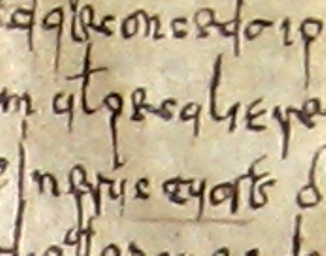Progress in Galician Visigothic script identification

We know as Visigothic script the Latin script used between around the 8th and 13th centuries in the territories that formed the ancient Visigothic kingdom. Since the end of last century, once established its basic graphical characteristics (variants, morphology, abbreviations, evolution, etc.) and discussed about its possible origin (genetic, chronological and geographical), the published studies about this kind of writing have focused on further analysis of the regional characteristics.
The study of this aspect is very important to allow the geographic location of all those sources which, analyzed in isolation, we can not ascribe with certainty to a specific production center, such as codices without colophon or fragments. We can compare their graphic features with those of the scriptures that we can date and locate geographically, such as diplomas, to build a complete context allowing us to continue with the study of this writing, its evolution and all the cultural aspects related to these sources.
The first two differentiated areas were the Mozarabic and the Leonese in the late 19th century, and soon after the Portuguese and the Catalan and southern France ones. But we still have work to do. Despite the large volume of documentation preserved in Visigothic script of the ancient Kingdom of Galicia, the detailed examination of these sources had not yet been done. Consequently, has been kept the idea that this type of writing does not have specific features in this area enough to deserve a specific study and separate this as independent of the Leonese, in which traditionally has been included.
Thus, the main goal of my doctoral thesis was the beginning of the task ahead, the study of manuscript sources preserved in Visigothic script for Galicia, through the representative sample of the diocese of Lugo: (i) make a corpus of manuscript sources preserved in this kind of writing from this specific area, (ii) to identify the major production centers (cathedral and monastic training schools), (iii) distinguish the material authors of these sources and relate them to each center-school, (iv) specify a timeline for use of the Visigothic script in their main variants by center, (v) determine the percentage of use of each variant within this period, (vi) identify the characteristics which seems like specifics to this area, (vii) study the evolution of each variant and (viii) to compare the results, timing and graphics features, with the peculiarities of this kind of writing in other centers.
References
"La escritura visigótica en Galicia I. Diócesis lucense" Doctoral thesis defended by Ainoa Castro Correa june 7th 2012. Director: Jesús Alturo Perucho from the Department of Antiquity and Middle Age Studies.

